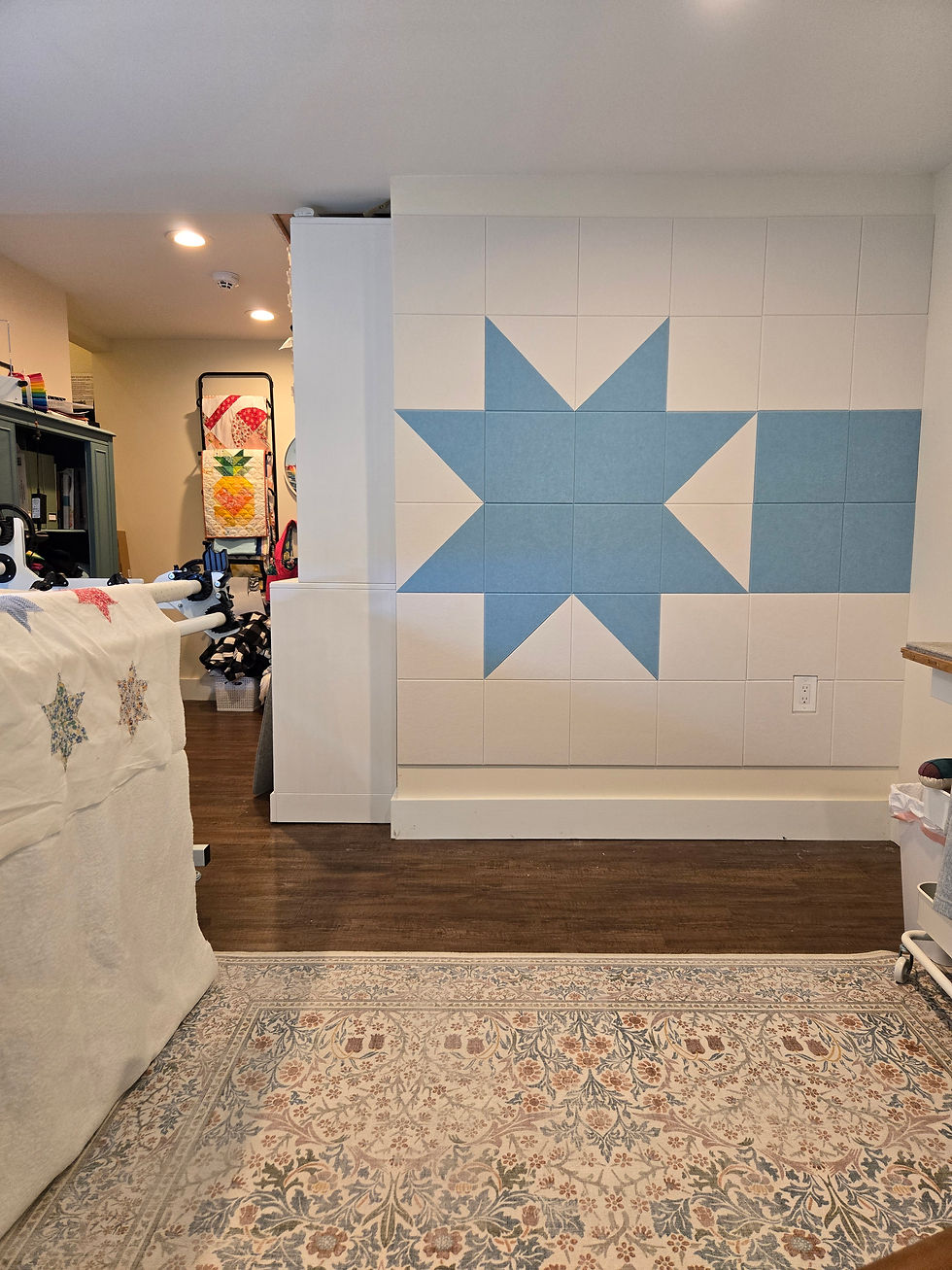Making A Quilt Sandwich
- Maggie Reno

- Jul 7, 2021
- 3 min read
If you are sending the quilt away to be quilted by a longarm quilter you do not need to make a quilt sandwich. Just follow their instructions for prepping your back, batting and top and send each item separately.
Instead of photographing or re-creating videos that have already been done before I have chosen to link you to my favorite sources or videos for each method.

SPRAY BASTING
My go-to method for basting a quilt at home is spray basting. I will only spray the baste OUTSIDE because it's so annoying to clean, but it's still my favorite choice. Here's how I use spray baste to sandwich a quilt.
Press your backing and lay it out flat on a flat solid surface wrong side up. Smooth it out and tape it to the floor with painters tape or kraft tape. Do not pull it or stretch it out! Just have it nicely smoothed flat.
Take the batting outside and spray with 505 or another quilt spray adhesive on one entire side (if there is a bumpy side to the batting spray it, that should go towards the batting). Fold or roll it up to transfer it - the adhesive is sticky but you are able to pull the fabric apart. Bring it inside lay it, sprayed side down on the backing, squaring the top of the batting to the top of the backing. Slowly unfold or unroll while smoothing the batting as you go until the backing is covered. If the batting is larger than the quilt backing trim it to fit just inside the backing. This will help you make sure the top stays aligned to the layers.
Take your quilt top outside and spray the entire top on the wrong side of the fabric. Fold or roll it up to transfer, Bring it inside and lay it right side up on the batting, squaring the quilt top to the top of the batting. This will help the top to align with the backing the best. Slowly unroll or unfold while smoothing the top as you go until it is all open and smoothed. Check your backing and batting before moving to ensure that they both come out from all sides of the quilt along the whole outside of the quilt. Make any adjustments if necessary by lifting slowly and turning then smoothing again.
Trim about 2 inches around the edge, leaving enough of the backing and batting to hold while quilting, but not too much that it will get caught underneath while you quilt.
Carefully un-tape the backing from the solid surface and press the layered "sandwich" front and back to adhere the glue even better and really smooth things out.
Video Demonstration by Diane Bowen, From Blank Pages
FUSIBLE BATTING
Follow the same steps above for layering, skipping the spray baste and iron to fuse the layers following the manufacturer's instructions.
Video Demonstration by Angela Walters, Midnight Quilt Show.
PIN BASTING
Follow the same steps above for layering, skipping the spray basting. Pin every four inches in rows over the entire quilt top. Experienced quilters highly recommend Quilting Safety Pins with a bend in them or Clover Wonder Pins.
Tutorial with a Helpful Video by Ana Sanch Rumeu, Madam Sew
THREAD BASTING
Follow the same steps above for layering, skipping the spray basting, and taping down each layer taut but not stretched. Using a Long (Size 7) Needle and long thread take large stitches (up to 1 inch) in rows about 4 inches apart. You do not have to tie off the end of your basting but start and stop in the layers off the quilt top and leave the thread hanging loosely.
Video Demonstration by Cathy Izzo, The City Quilter for Howcast
LONGARM MACHINE BASTING
This is my absolute favorite basting method! Many long-arm quilters will provide basting for lower cost than their edge-to-edge or custom quilting prices. My favorite stitch length for this is 1 inch, anything over that is too loose and gets caught as I sew. I usually get it with the rows about 2 inches apart.







Comments